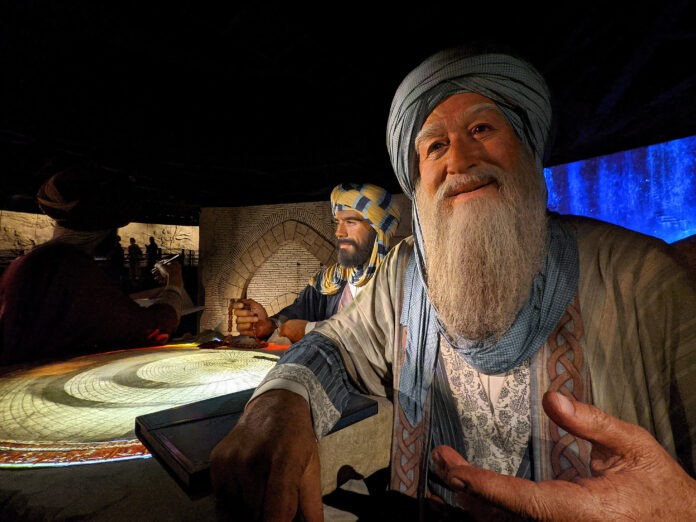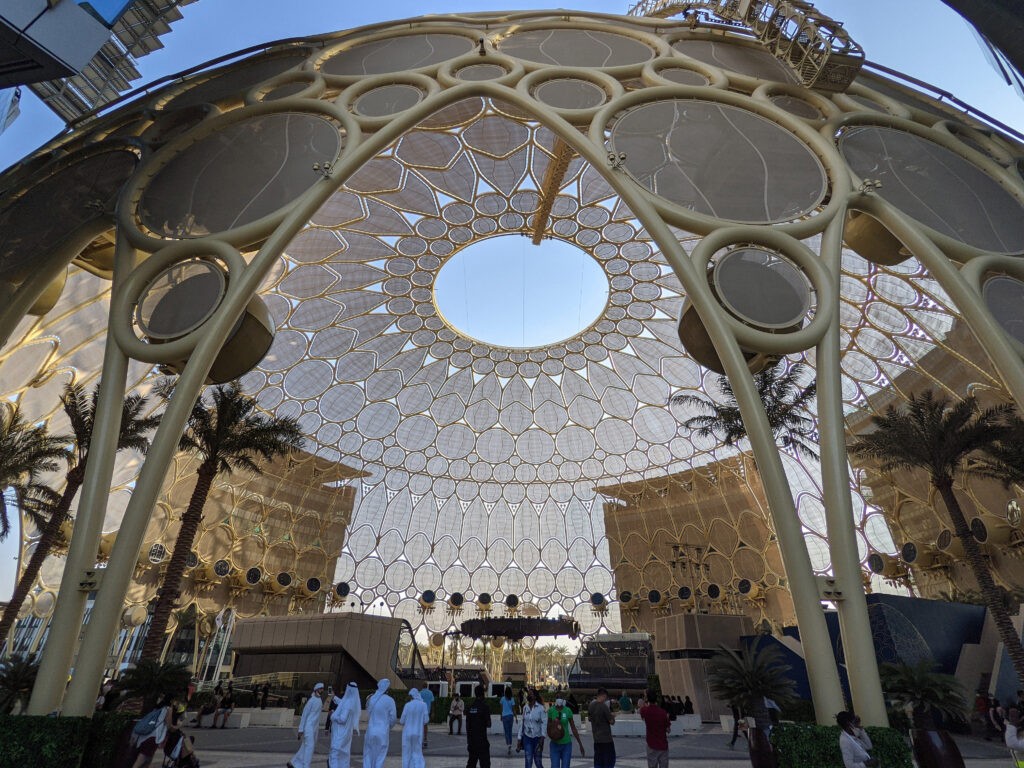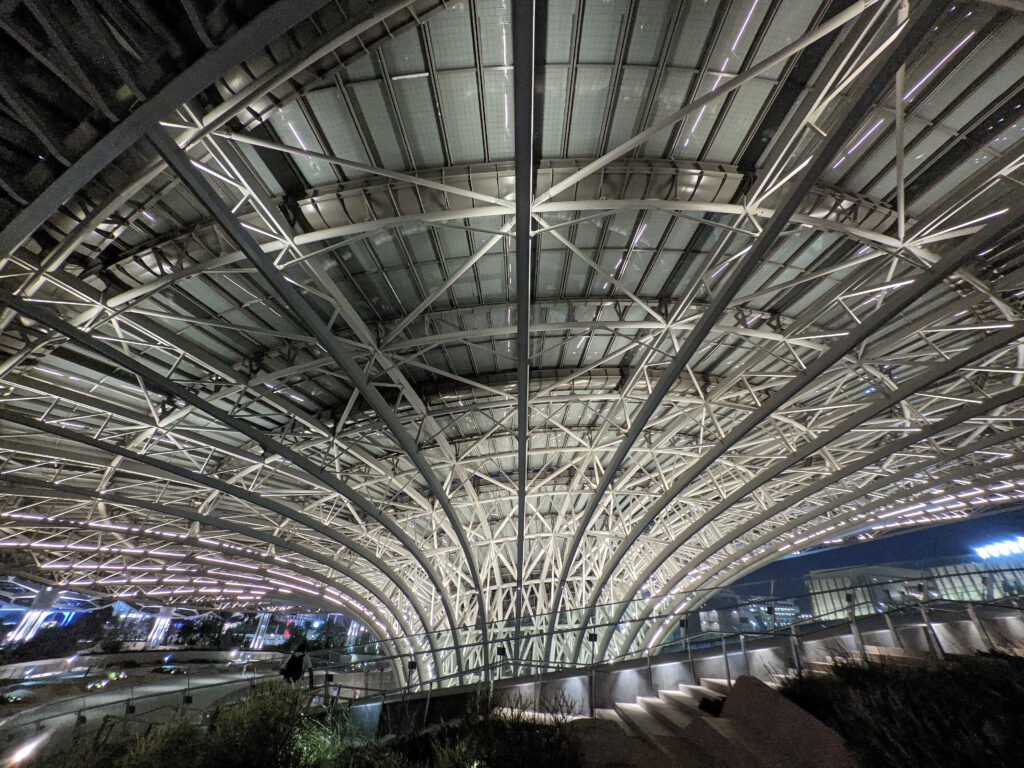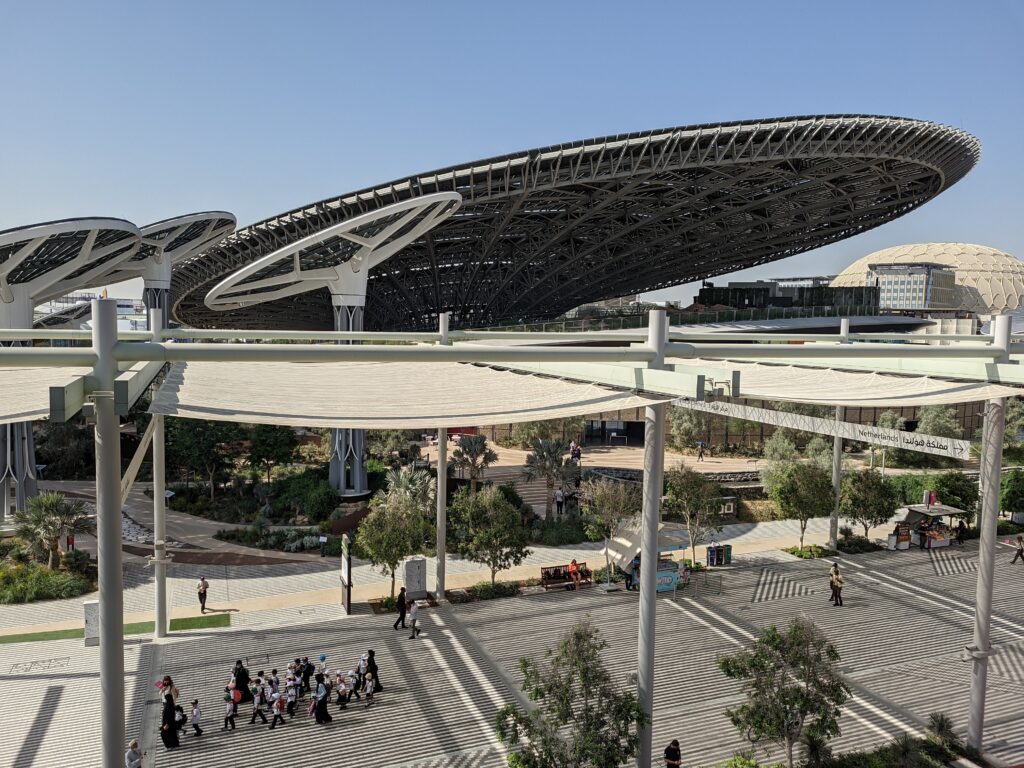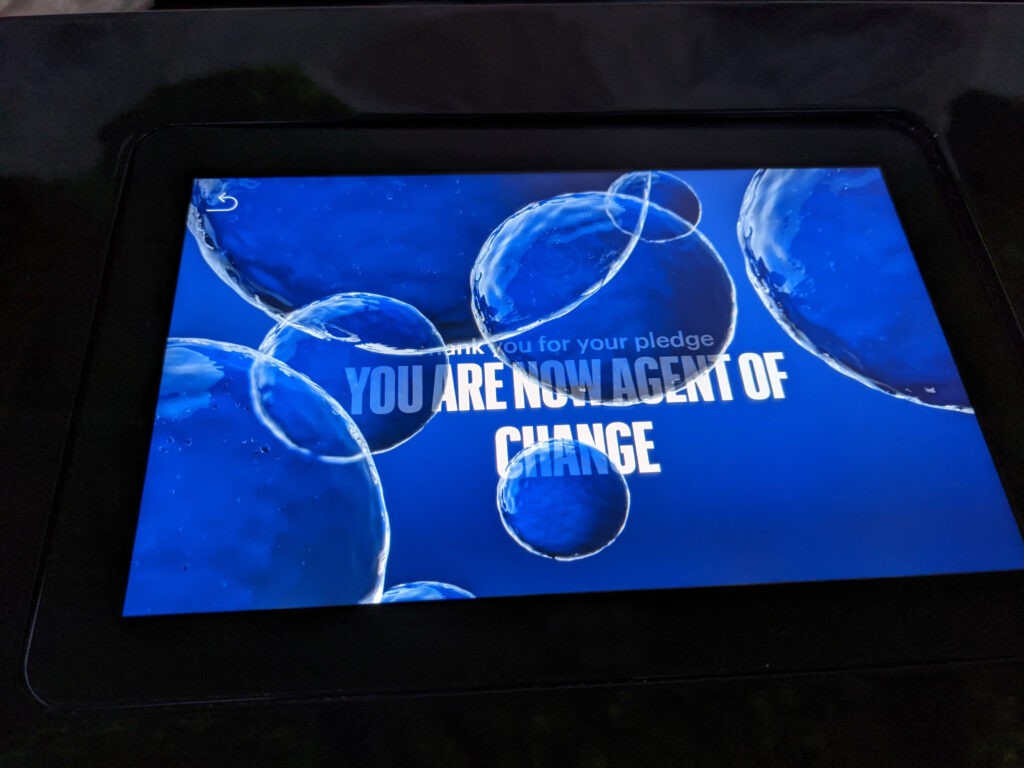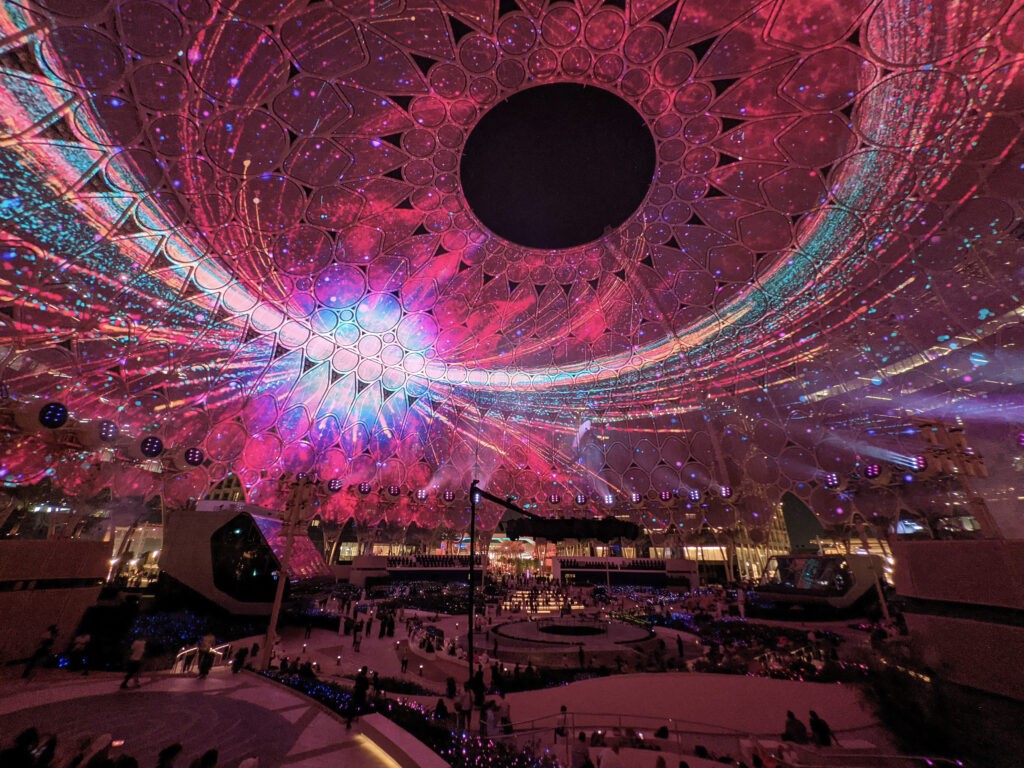by Carissa Baker, Ph.D.
Since the 1851 Great Exhibition in London, world’s fairs (aka world expositions or world expos) have sparked the human imagination. Often described as the Olympics of culture, technology, and world economies, these mega events garner millions of visitors during their runs, which are three months or six months (depending on category, per the overseeing body, the Paris-based Bureau International des Expositions).
Things that got their start – or came to global attention – at a world’s fair include landmarks like the Eiffel Tower and Space Needle. Other examples include inventions such as the telephone and dishwasher, and edible fare like Belgian waffles and Cherry Coke.
Industry impact
World’s fairs have had a profound impact on the development of amusement parks and themed entertainment, from placemaking and theming to types of rides and attractions (e.g, A Trip to the Moon, which would headline Coney Island’s Luna Park). Chicago’s 1893 fair (termed the World’s Columbian Exposition) was particularly significant, generating features including the Ferris wheel, the concept of the Midway, and cohesive, specialized architecture. Walt Disney was inspired by a world’s fair and later contributed to the 1964/65 New York World’s Fair with prominent attractions that would come to inhabit the theme parks (“it’s a small world,” Great Moments with Mr. Lincoln, and Carousel of Progress). Giant screen cinema also had its launch at the world’s fair, with the prototype of IMAX projection at Osaka Expo 70, and immersive cinema continues to be a favorite exhibition tool.
Since these days of novelty and invention, the world has changed with more access to information and travel. What has not altered in 170 years would be the impressive spaces and inspirational content present in global expositions.
First world’s fair in the Mideast
Expo 2020 Dubai, a six-month world expo that opened October 1, 2021 and will run through March 31, 2022 (the event was delayed due to the pandemic, but kept its “2020” title) continues in the long line of temporary spaces encouraging assembly. It is the first expo to be held in the Middle East and hosts an impressive 192 participating countries. The theme of this large show is “Connecting Minds, Creating the Future,” a lofty but ever-present idea.
Expo 2020 has several districts, with the three primary areas dedicated to the subthemes of Opportunity, Mobility, and Sustainability. Each district has its own soundtrack, mascot, and pavilions that connect to the subtheme. Opportunity’s anchor pavilion follows real people who find solutions in their communities and asks visitors to commit to small but important goals to become “agents of change.” It is the Expo home of the United Nations and thus emphasizes their global Sustainable Development Goals. Alif – The Mobility Pavilion, traces the human past of movement and our ever-striving natures; it concludes with children trying to build the future by learning what is vital for harmony and happiness. The stars of this pavilion are amazingly lifelike, 30-foot-tall statues (created by Wētā Workshop) of explorers Al-Bakri, Ibn Battuta, and Ahmad ibn Majid. Terra – The Sustainability Pavilion illustrates the beauty but vulnerability of the planet and asks tough questions about how we live. The award-winning design from Grimshaw Architects is a self-contained ecosystem and features several plant-based restaurants from chef Matthew Kenney.
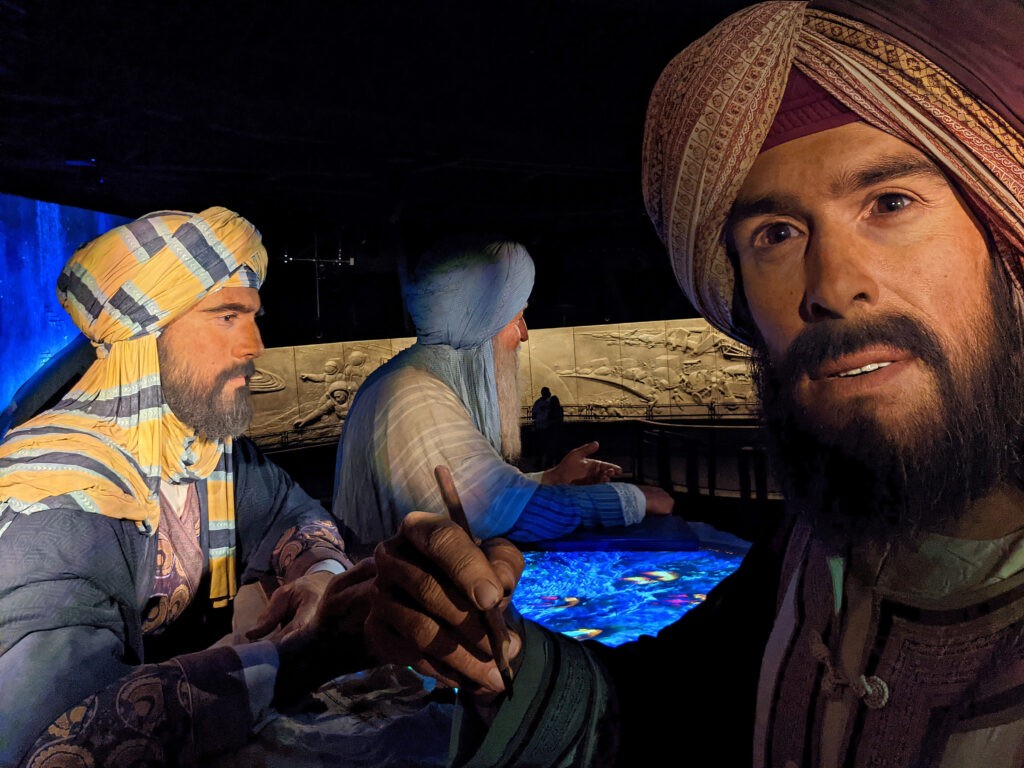
National pavilions
The country pavilions range in topic from natural beauty to human artistry, history and culture to future technologies, and tourism promotion to requests for investment. Several nations have food and live entertainment, ensuring a multi-sensory celebration. As a narrative scholar, I was impressed by the varied ways that country pavilions told stories and immersed visitors in culture. Everything from abstract art and symbolic structures to explicit narration was used to represent nations. A dozen examples:
- A walk-through scene from Angkor Wat is present in Cambodia’s pavilion.
- A storage container design contains stories of Jamaica, with the pavilion culminating in listening stations for great Jamaican music.
- Kazakhstan includes a show where a gymnast dances with a Kuka arm in a human-robotic symbiosis.
- Morocco tells stories with multiple techniques including a room where different colors of paint activate depending on the lighting, a place filled with decorated windows that open or close to reveal vignettes, and an area called “Argan Stories” where animated people speak about their connections to the important tree.
- A New Zealand film surrounds the audience and narrates a story about the power of the Whanganui River, given the legal status of a human in a 2017 law.
- The Netherlands has a show where the film is projected on umbrellas the audience members hold and is punctuated by lyrical music, resulting in a shared experience; the show exits into a cone-shaped, vertical farm to highlight sustainability.
- Russia tells a story about the different facets of the mind (creative, cultural, emotional, learning, social), with a massive brain centerpiece that is projected on and opens up during a dramatic show.
- Singapore allows visitors to walk through lush hanging gardens to experience what a balanced urban environment can be.
- Spain has several ways to tell stories including art installations, a short film (the powerful August Moon by Nacho Vigalondo), and an immersive Forest of Intelligence with environmental effects and interactive features.
- Saudi Arabia showcases visual technologies but also has an escalator through historical town scenes on the way up and a hypothetical future on the way down.
- In Syria’s pavilion, “Hymn to Nikkal,” the oldest musical notation discovered, is performed for the first time in modern history.
- Beautiful artifacts, new characters, a film with water effects, and live stage performance are all found in Thailand’s pavilion.
- Tonga’s interactive exhibit asks visitors to clear debris so wildlife can swim free.
Optimism and the pandemic
Some of the fun aspects of attending the Expo are seeing the diversity of content from the countries, getting passport stamps from each pavilion, and visiting the pavilion of one’s own nation. In my case, this was the USA, and the pavilion highlighted our space program, national parks, and the power of future thinking.
The tone of the entire Dubai Expo – from its theme song “This Is Our Time,” to educational content within pavilions – is optimism, especially for the choices individuals and nations can make to create a better future. Though it does not dwell on current conflicts, the Expo does not shy away from hard-hitting messages such as the consequences of the climate crisis, the need to eliminate poverty, or women’s inequality. As the World Expo Museum’s pavilion states, these gatherings are “global platforms for exchanging solutions to humanity’s greatest challenges.”
The pandemic looms over the event, affecting operational protocols and pavilion content in some cases. Though the Expo notes they have had 5.6 million visits as of early December, the potential for greater international visitation has been severely limited by travel restrictions. Nonetheless, when I attended, there were countless nationalities present in the enormous staff and visitors appeared very diverse. As Dr. Jian (Jay) Wang, Director of the USC Center on Public Diplomacy argues, “In a mid-pandemic world, this enormous gathering of countries and people constitutes a singular global communal moment.”
The communal moment and the continued relevance of world expos
Nowhere was the communal moment more evident than evenings at Al Wasl Plaza. The centerpiece of the Expo, Al Wasl has a performance space with a stage where artists perform, such as Alicia Keys who recently debuted a new album there. The Al Wasl Dome comes alive each night with the help of 252 Christie projectors. Projection shows range from expressive narratives and shows focusing on particular subjects (space, nature, art, etc.) to many displays for particular nations (every country gets a “National Day”). Videos and photographs do not do this space justice. Many who come to catch a show or two stay for hours, something my husband and I did several times. One of the more powerful qualities of this venue was that collective aspect. No matter one’s background, it seemed that everyone came to Al Wasl. They sat in the concert seats, on the benches, on grass mounds, on the ground – all gazing upward. From many nations, we came together and were entranced by beauty, story, and meaning. The whole experience was truly wondrous.
The World Expo Museum’s pavilion poignantly indicates the human fantasies and ideals an expo may represent for the Earth, the universe, science, technology, innovation, arts and humanities, and a better life. From fair aficionados who go to an expo every five years to the many for whom this is a once-in-a-lifetime visit, Expo 2020 holds value. This is not the place where every reality is discussed or dispute debated – though economic forums, cultural dialogue, and leader summits do take place. But it is a place where countries can tell their stories. Visitors can meet people from around the world and learn about cultures they do not know, which may lead to greater understanding. They can find that so many of our challenges are similar, and they can think about making different choices for the future. Visitors still value the pageantry and ceremony of world’s fairs and Olympics. It is “edutainment” on an epic scale, and it is a coalescence of great design minds. Our world has changed, but there is still a purpose for these kinds of events and not just for governments and investors. Inspiration and uplift matter. Conversation amongst cultures matters. Dialogue on our shared struggles matters. The creative energy that helps produce future visionaries of placemaking, culture and design – future Walt Disneys, if you will – matters. I left enormously motivated and excited to continue to teach my students about the legacy of world’s fairs and the continued purpose of these shared experiences.
More by Carissa Baker: Theme Park Storytelling
InPark is providing continuing, multimedia coverage of Expo 2020 Dubai. Check back for more articles, podcasts, photo galleries and videos.


